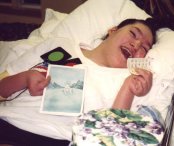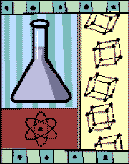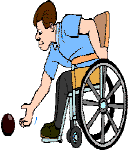The Cerebral Palsy Network
- Cephalic Disorders
- Anencephaly
- Cebocephaly
- Colpocephaly
- Ethmocephaly
- Holoprosencephaly
- Hydranencephaly
- Iniencephaly
- Lissencephaly
- Magalencephaly
- Microcephaly
- Porencephaly
- Schizencephaly
- Rare Cephalies
- More Information
- Research
Around CPN
Resource
Center
Infants born with anencephaly are usually blind, deaf, unconscious, and unable to feel pain. Although some individuals with anencephaly may be born with a rudimentary brainstem, the lack of a functioning cerebrum permanently rules out the possibility of ever gaining consciousness. Reflex actions such as respiration (breathing) and responses to sound or touch may occur.
The disorder is one of the most common disorders of the fetal central nervous system. Approximately 1,000 to 2,000 American babies are born with anencephaly each year. The disorder affects females more often than males.
The cause of anencephaly is unknown. Although it is believed that the mother’s diet and vitamin intake may play a role, scientists agree that many other factors are also involved.
There is no cure or standard treatment for anencephaly and the prognosis for affected individuals is poor. Most infants do not survive infancy. If the infant is not stillborn, then he or she will usually die within a few hours or days after birth. Anencephaly can often be diagnosed before birth through an ultrasound examination.
Recent studies have shown that the addition of folic acid to the diet of women of child-bearing age may significantly reduce the incidence of neural tube defects. Therefore it is recommended that all women of child-bearing age consume 0.4 mg of folic acid daily.
The following are some of the latest updates and support networks for those families whom are dealing with Anencephaly now or in the past.
This site is for those whom choose to carry to term
http://www.oocities.org/tabris02/index.html
http://www.erichad.com/wwl/index.htm
Websites offering a vast range of issues concerning anencephaly including organ donation.
http://www.oocities.org/hotsprings/spa/2147/anencephaly.html
This site designed & maintained by Mystic Dawn Web Creations. The Cerebral Palsy Network©1997/2003. All graphics are the exclusive property of CPN, unless otherwise indicated. Contact CPN at Cerebral Palsy Network for further information.
Last updated 03/24/03

Amanda the reason CPN was
started
CPN
Reunion 2003

CP
Research
What's happening Today with
Cerebral Palsy

Special
Olympics
What's happening with
Special Olympics in 2003

CP
& Education
What's happening with
Special Need and Education in 2003
